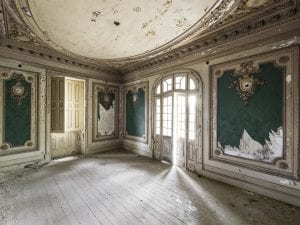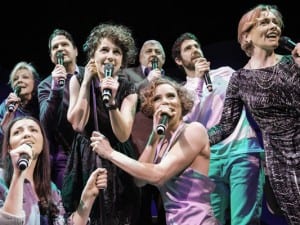The annual survey of contemporary photography at New York’s Museum of Modern Art reveals an art form in the throes of profound transformations.
With the virtual expiration of analogue photographic technology and the maturation of the digital era, a number of commentators have prescribed the end of photography itself, supposing that, with the wide availability of technology such as Instagram and Flickr, the activity of photography is in its death-throes as a technique or art form. However, as a new exhibition of contemporary photography at the Museum of Modern Art (MoMA), New York, demonstrates, photography itself seems ever more central to the ways in which the world is experienced by individuals and societies. Contrary to any sense of the “death of photography”, the artists showcased in New Photography 2013 are engaged in profoundly varied and volatile investigations into redefining their approaches to photography in such a way that transforms the fundaments of the medium.
Focusing the exhibition around eight key contemporary artists who question what a photograph is and can be, curator Roxana Marcoci comments that the changes occurring within photography are concerned with “the apparatus of technologies and the institutions and artistic practices to which photography belongs.” For Marcoci, this revolution within photography is akin to the revolution at the beginning of the 20th century, when the wealth of photographic imagery first exploded and began to pervade the ways in which society reproduces and represents itself. As such, without exception, the artists included in New Photography 2013 are engaged in redefining the medium in reference to both the newly available technologies of today and to the historical circumstances of photographic traditions, as well as in relation to a wider context of contemporary art practice.
Two artists whose works demonstrate a palpable engagement with the history of the medium itself are the 2013 Deutsche Börse Photography Prize winners Adam Broomberg (b. 1970) and Oliver Chanarin (b. 1971), whose work War Primer 2 (2011) is included in the exhibition. This photo-book takes as source material Bertolt Brecht’s book War Primer, first published in 1955 in Germany and translated into English in 1998. Brecht’s book was a critique of mass media from World War II in which he juxtaposed short poems with newspaper imagery from the war. In Broomberg and Chanarin’s War Primer 2, Brecht’s technique of alienation and strangeness known as “verfremdungseffekt” is ramped up even further by the layering of superimposed War on Terror imagery culled from the internet and screen printed text.
Inhabiting Brecht’s original and appropriating its suggestions for how to address mass media photography, the work therefore updates the technologies through which mass media images are conveyed that occur through the internet rather than newspapers. This fact is also reflected in the publication of War Primer 2 by Broomberg and Chanarin, which has made the work available as an iPad app. Indeed, even the title of the pair’s work seems to draw on the relation of contemporary images of war and big-budget blockbuster Hollywood portrayals of war: War Primer 2 as sequel to its predecessor, making its commentary all the more heavy hitting.
Almost since the inception of photographic technology, its politics have been intertwined with feminism because of its role in the representation of gender and sexuality. In New Photography 2013, feminist issues are addressed in the works of a number of artists and often surface, as Marcoci remarks, in ways that are “not immediately evident”. For example, Eileen Quinlan’s (b. 1972) work utilises many of the photographic tools and styles associated with fashion and cosmetic industry photographs. In the images Sophia and Laura from 2012, Quinlan uses a Yoga mat that she bends and sculpts prior to hanging it on the wall and photographing it. These images look as though the mat itself (and presumably its cultural resonances of body image, privilege and class) has been wrestled and mangled, and yet it retains a stubborn pliability and endurance.
The primary clue in regarding these works as addressing feminist issues comes from their titles Sophia and Laura, which are drawn from feminist cultural resonances, in these cases from one of the characters in Judy Chicago’s landmark work The Dinner Party (1969) and David Lynch’s television series Twin Peaks respectively. The title for Laura came about accidentally when the film she was using failed to develop fully, leaving the image dominated by a set of “twin peaks.” However, the associative leap to Twin Peaks is exactly the sort of intellectual process that Quinlan’s very abstract work engenders, where the viewer is unsteadied in questioning exactly what it is they are looking at. In this way, Quinlan’s work also enacts a central tension between abstraction and documentary strands of photography, while also using photography in a way that is both sculptural and, in a sense, physical.
In his ongoing practice, Brendan Fowler (b. 1978) also realises photography’s physical and transformative capacity in dramatic pieces that combine elements of performance, sculpture and collage. In works such as Summer 2010 (Computer on 20” Slingerland Bass Drum, Accident/The Wood Fell On Me In Studio May 20 2010 #5, “Poster For Dialog With The Band Aids Wolf” Screens in Studio, Flower in Patty’s Gazebo 2), he forcefully interweaves and fuses four distinct photographs together. Literally smashing framed works into each other gives these works a sculptural and abstracted quality, as well as referencing the smashed guitars of rock star personas. By folding or collapsing the practice of photography in on itself, Fowler also performs a kind of endgame through suggesting its revival and ongoing vitality.
One of the most compelling aspects of Fowler’s work is its capacity to blend and challenge traditional notions of what a photograph is, as Marcoci comments: “In curating New Photography, one of the things I did not want to do was to ghettoise photography. On the contrary, I’m very much interested in showing how it is realised in all sectors of culture, and the most unexpected way is to think of it in relation to an actual performance. We know that works have often been made of performances, but Fowler’s pieces move this relationship in another direction.” With this in mind, MoMA has commissioned a new performance work from Fowler entitled And Martin (2013), which draws upon his previous incarnation as BARR, the band/alias under which he first earned renown in the early 2000s. And Martin, which is half-sung and half-spoken, extends the potency of this critique to the dynamics of stand-up comedy and educational presentation.
Polish artist Anna Ostoya’s (b. 1978) work relates to that of Fowler in that she also combines multiple photographs into one work. Employing a process she terms “pseudomorphic”, she explores historical avant-garde art movements and individual artworks. The technique is to combine multiple art-historical works together to reflect on all of them while also revealing something about the contemporary art world and inheritances from the past. Mixed Pseudomorphism of a True/False Cry (2010) pits a photograph from 1931 of model Wanda Hubbell in tears by the photographer Germaine Krull alongside a still from Bas Jan Ader’s film I’m too sad to tell you (1971). The title suggests that the categories of real and false are “mixed,” and that is the effect of the work: to open up a sense of what crying is and how it can be cynically induced. Gender politics underlie the piece, however its most pronounced focus seems to be art itself and how a dichotomy of truth and falsehood plays out in photography in particular.
The work of American artist Lisa Oppenheim (b. 1975) also interrogates the position of photographic images in contemporary society, especially as it is filtered through the medium of the internet. She employs a meticulous process to create haunting works that draw on both abstract and documentary traditions within photography. Her Smoke series (2010) uses the picture sharing technology Flickr to find source images by performing generic searches using keywords such as “volcano,” “industrial pollution” and “bombing attacks.” After uncovering the images of fire and smoke from these searches, she uses only selected portions of the originals, which she transfers to a digital negative. These images are then developed using firelight instead of an enlarger, and the lights and darks are reversed using solarol.
The work of Josephine Pryde (b. 1967) makes use of an entirely other tradition of photography, that of photography as it has been used and is used within science and, in particular, medicine. Her series of images It’s Not My Body (2011) superimposes MRI scans of a human embryo and mother over a photograph of a deserted landscape. The resulting stills conflate a number of assumptions and debates concerning the woman’s right to choose, and representations of what is natural or unnatural. In addition, the atmosphere of each image is profoundly altered using a tinted filter, giving a sense of how debates and politics surrounding abortion are skewed through tinted and often tainted perspectives. The images display a sensitivity to and awareness of the role of photographic images in shaping the politics of the issue, and Pryde takes images that have been used to deny women the right to choose and recasts them into the debate. The shape of the superimposition in It’s Not My Body XIII (2011), for example, seems to reference grotesquely Duchamp’s Fountain, suggesting both the “readymade” arguments that are wheeled out in relation to the politics of a woman’s right to choose and also, of course, the loaded and male-oriented symbol of the urinal.
An engagement with and commentary on the role of photography in shaping responses within society is also evident in the series Scale (2012), in which Pryde photographs guinea pigs in striking and often frivolously colourful portraits alongside cultural detritus such as ribbon boxes, neon shoelaces, cellophane wrappers and the names of capital cities such as London, Tokyo and New York. Drawing on the common parlance of “guinea pigs”, which comes from the lingo of animal testing, Pryde performs her own (harmless) experiments by putting the animals into these bizarre compositions. As such, she is also critiquing the over-sentimentalised stock photography of animals that forms the basis of many greeting cards, advertisements and calendars.
Distinguished among the other artists, as the one for whom analogue photographic techniques remain an active practice and possibility within her work, German artist Annette Kelm’s (b. 1975) meticulously composed and hand-printed photographs have the visual precision of advertisements. However, the mysterious and enigmatic narratives suggested by the works undercut the intimation of clarity that her aesthetic conveys. Her images are not just clear, they are clearly odd, and it is this quality that makes them compelling and baffling. For example, in Untitled (2013), tulips are photographed on a zebra black and white stripe background on which there are also miniature hoops or bridges painted red and green. The softness of the still closed-up tulips contrasts utterly with the nursery colours of the red and green arcs and the stripey black and white of the background. In her quietly unsettling images, nothing is hidden and everything is exactly as it seems, and yet it is this fact itself that makes the pieces so strange.
The most compelling and exciting aspect of New Photography 2013 is its resistance of a single definition of the form. Each artist included in the exhibition is engaged in a process of expansion, re-definition and flux. While each of them works with photography, many of their works are not instantly recognisable as photographs and certainly push the boundaries of what photography can be. New Photography 2013 demonstrates that, far from being the endgame of photography, contemporary art practices are becoming ever more aware and conscious of using photography in a way that interrogates its continuing pervasiveness across all culture.
New Photography 2013 runs until 6January at MoMA. www.moma.org.
Colin Herd





